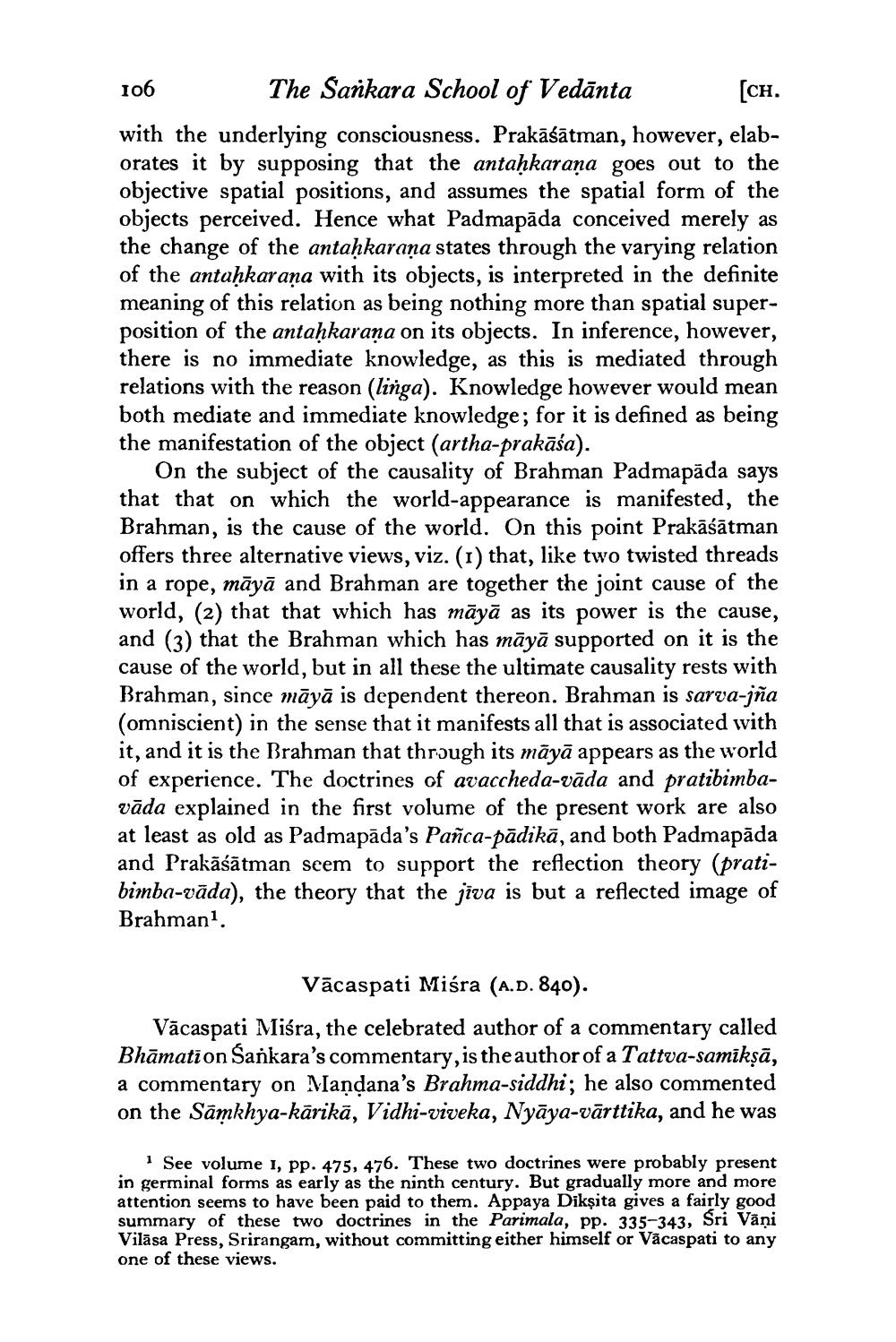________________
106
The Sankara School of Vedānta [CH. with the underlying consciousness. Prakāśātman, however, elaborates it by supposing that the antaḥkaraṇa goes out to the objective spatial positions, and assumes the spatial form of the objects perceived. Hence what Padmapāda conceived merely as the change of the antaḥkaraṇa states through the varying relation of the antaḥkaraṇa with its objects, is interpreted in the definite meaning of this relation as being nothing more than spatial superposition of the antaḥkaraṇa on its objects. In inference, however, there is no immediate knowledge, as this is mediated through relations with the reason (linga). Knowledge however would mean both mediate and immediate knowledge; for it is defined as being the manifestation of the object (artha-prakāśa).
On the subject of the causality of Brahman Padmapāda says that that on which the world-appearance is manifested, the Brahman, is the cause of the world. On this point Prakāśātman offers three alternative views, viz. (1) that, like two twisted threads in a rope, māyā and Brahman are together the joint cause of the world, (2) that that which has māyā as its power is the cause, and (3) that the Brahman which has māyā supported on it is the cause of the world, but in all these the ultimate causality rests with Brahman, since māyā is dependent thereon. Brahman is sarva-jña (omniscient) in the sense that it manifests all that is associated with it, and it is the Brahman that through its māyā appears as the world of experience. The doctrines of avaccheda-vāda and pratibimbavāda explained in the first volume of the present work are also at least as old as Padmapāda's Pañca-pădikā, and both Padmapāda and Prakāśātman seem to support the reflection theory (pratibimba-vāda), the theory that the jīva is but a reflected image of Brahman1.
Vācaspati Misra (A.D. 840).
Vācaspati Miśra, the celebrated author of a commentary called Bhāmation Sankara's commentary, is the author of a Tattva-samikṣā, a commentary on Mandana's Brahma-siddhi; he also commented on the Sāmkhya-kārikā, Vidhi-viveka, Nyāya-vārttika, and he was
1, pp.475 the ninthem. Appiawala, Pepit 33 Facaspati
See volume 1, pp. 475, 476. These two doctrines were probably present in germinal forms as early as the ninth century. But gradually more and more attention seems to have been paid to them. Appaya Dikşita gives a fairly good summary of these two doctrines in the Parimala, pp. 335-343, Sri Vāņi Vilāsa Press, Srirangam, without committing either himself or Vācaspati to any one of these views.




